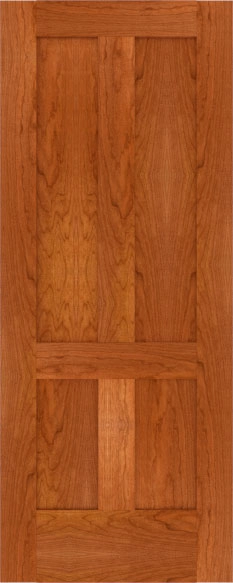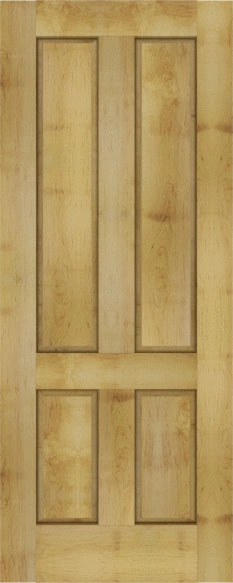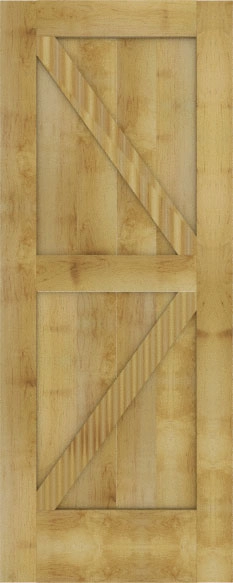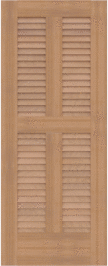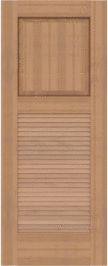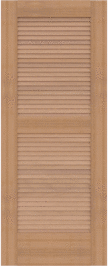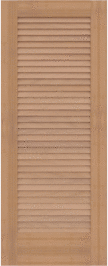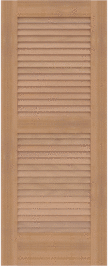What You Should Look For In Interior Wooden Doors
Published: October 09, 2023
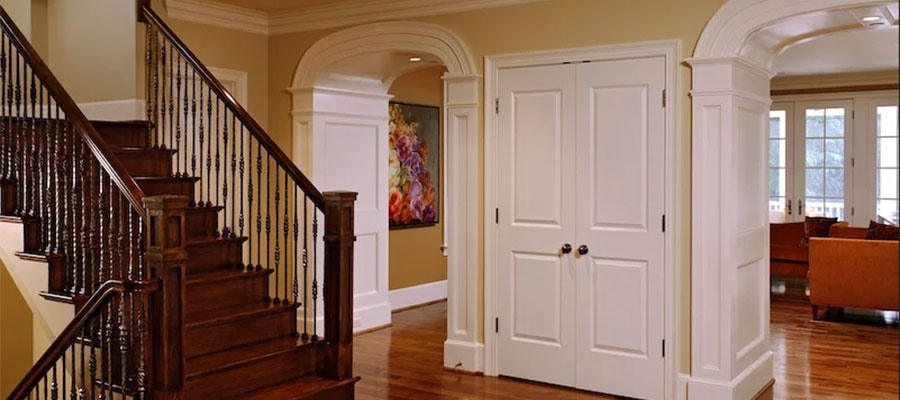
Interior wooden doors play a pivotal role in home design, contributing not only to aesthetics but also to functionality and overall ambiance. Choosing the right interior wooden door can significantly enhance the appeal of your living spaces and provide privacy and insulation. In this guide, we'll explore key considerations when selecting interior wooden doors to help you make an informed choice that suits your style, budget, and needs.
I. Types of Interior Wooden Doors
A. Solid Wood Doors
Solid wood doors are known for their durability and timeless appeal. They offer excellent insulation and can be refinished or repainted to match changing interior styles.
Advantages
- Durability and longevity
- Natural aesthetic appeal
- Customizable in terms of finishes and styles
Disadvantages
- More expensive than hollow core doors
- Susceptible to warping in extreme humidity conditions
B. Hollow Core Doors
Hollow core doors are lighter and more affordable compared to solid wood doors. They are made of a wooden frame with a hollow center filled with cardboard or plastic.
Advantages
- Affordable and cost-effective
- Lighter and easier to install
- Adequate for rooms with minimal privacy needs
Disadvantages
- Prone to damage and less durable
- Limited in design and customization options
C. Panel Doors
Panel doors consist of wooden frames and panels, adding depth and visual interest to the door's design.
Advantages
- Stylish and versatile design options
- Offer good insulation and durability
- Suitable for various interior styles
Disadvantages
- More expensive than hollow core doors
- Require periodic maintenance to retain their appearance
D. French Doors
French doors feature multiple glass panes and are often used for dividing spaces while allowing light to pass through.
Advantages
- Enhance natural light and create an open feel
- Elegant and classic appearance
- Ideal for connecting indoor and outdoor spaces
Disadvantages
- Reduced privacy due to glass panels
- Higher cost compared to standard panel or hollow core doors
II. Considerations for Choosing Interior Wooden Doors
A. Style and Aesthetics
When selecting an interior wooden door, consider how well it complements your overall interior design and décor.
- Match with Overall Interior Design Choose a door style, finish, and wood species that harmonize with your home's aesthetic, whether it's traditional, modern, rustic, or contemporary.
- Choice of Wood Species and Finish Different wood species have distinct grains and colors. Consider how the wood species and finish will blend with your existing furnishings and color schemes.
B. Functionality
The functionality of a door is crucial, addressing factors such as swing direction, hardware, and handles.
- Swing Direction Determine the ideal swing direction of the door based on the layout of the room to ensure smooth traffic flow and functionality.
- Handles, Knobs, and Hardware Select appropriate handles, knobs, and hardware that match the overall door design and offer ease of use.
C. Size and Measurements
Accurate measurements are essential to ensure a proper fit and functionality of the door.
- Standard Door Sizes Understand the standard door sizes and choose accordingly. If needed, opt for custom sizing to fit non-standard openings.
- Customization Options Explore customization options to get a door that perfectly fits your space, including custom heights and widths.
D. Budget
Consider your budget and evaluate the cost implications associated with different door types and customization options.
- Cost Factors Analyze the costs of various door types, finishes, and hardware to align with your budget without compromising on quality.
- Cost-Effective Options Look for cost-effective alternatives that suit your financial constraints while still meeting your design and functionality requirements.
III. Durability and Maintenance
A. Wood Species and Durability
The choice of wood species significantly impacts the door's durability and ability to withstand wear and tear.
- Differences in Wood Types Research and understand the durability and resistance to moisture and pests of different wood types.
- Resistance to Wear and Tear Select a wood type that can endure everyday use and maintain its appearance over time.
B. Maintenance Requirements
Regular maintenance ensures the longevity and aesthetics of your wooden door.
- Cleaning and Care Learn about proper cleaning and care routines to keep your door looking fresh and appealing.
- Refinishing Options Be aware of refinishing options to restore the door's original finish or change it to suit evolving tastes.
IV. Energy Efficiency
A. Insulation
Consider the insulation properties of the door and its contribution to maintaining a comfortable indoor temperature.
B. Weather-stripping and Seals
Ensure the door is equipped with proper weather-stripping and seals to prevent air leaks, ultimately reducing energy consumption.
C. Impact on Heating and Cooling Costs
A well-insulated wooden door can help lower heating and cooling costs by keeping indoor temperatures stable.
V. Soundproofing
A. Sound Transmission Class (STC) Rating
Evaluate the STC rating of the door to determine its ability to block or reduce noise transmission between rooms.
B. Enhancing Soundproofing with Wooden Doors
Explore soundproofing techniques, such as adding seals or choosing solid wood doors, to enhance the door's soundproofing capabilities.
C. Importance in Bedrooms and Home Offices
Consider soundproofing features, especially for doors in bedrooms and home offices, to maintain a peaceful and productive environment.
VI. Installation
A. DIY vs. Professional Installation
Decide whether to opt for a DIY installation or hire a professional installer based on your expertise and comfort level.
B. Common Installation Steps
Familiarize yourself with the typical installation process for wooden doors to understand what to expect during installation.
C. Ensuring Proper Alignment and Sealing
Ensure that the door is installed correctly, aligning it well and sealing any gaps to achieve optimal performance.
VII. Environmental Considerations
A. Sustainable Sourcing and Certifications
Choose doors made from sustainably sourced wood and look for certifications that indicate responsible manufacturing practices.
B. Recycling and Disposal Options
Explore recycling and disposal options to minimize the environmental impact when replacing or discarding old doors.
In conclusion, selecting the right interior wooden door involves careful consideration of style, functionality, durability, energy efficiency, and environmental impact. By evaluating these aspects and aligning them with your preferences and requirements, you can choose a wooden door that enhances the beauty and functionality of your home, providing long-lasting value and satisfaction. Happy door hunting!
Build your new Custom Louvered Doors and get a Free Instant Quote Today
Our state of the art designers allow you to design and build completely customized Louvered Doors to fit your exact needs.
Questions or concerns contact us here or via 412.641.0177 .
Build an Instant QuoteGet Started Designing Your New Solid Wood Doors Today!
Check Out Our Line of Louvered Doors
Need Help?
Contact Us @ 412.641.0177
Recently Published
Interior Cabinet Door Styles That Elevate Your Kitchen Or Bathroom
Published: November 12, 2025
Why Mortise
Published: October 23, 2025
From Shaker To Raised Panel: Cabinet Door Styles That Transform Your Home
Published: October 08, 2025
How To Match Door
Published: September 30, 2025
Choosing The Right Exterior Shutters: Louvered, Board
Published: September 25, 2025
The Warmth Of Wood: Barn Doors Tailored To Your Home
Published: September 09, 2025
Classic Style, Modern Strength: Custom Wooden French Doors
Published: September 03, 2025
Built By Hand, Designed To Last: Custom Wood Louvered Doors
Published: July 07, 2025
Flat Panel Shutters For Colonial, Craftsman, And Farmhouse Styles
Published: May 28, 2025
Bring Old-World Charm Home With Custom Wooden Louvered Shutters
Published: May 04, 2025


